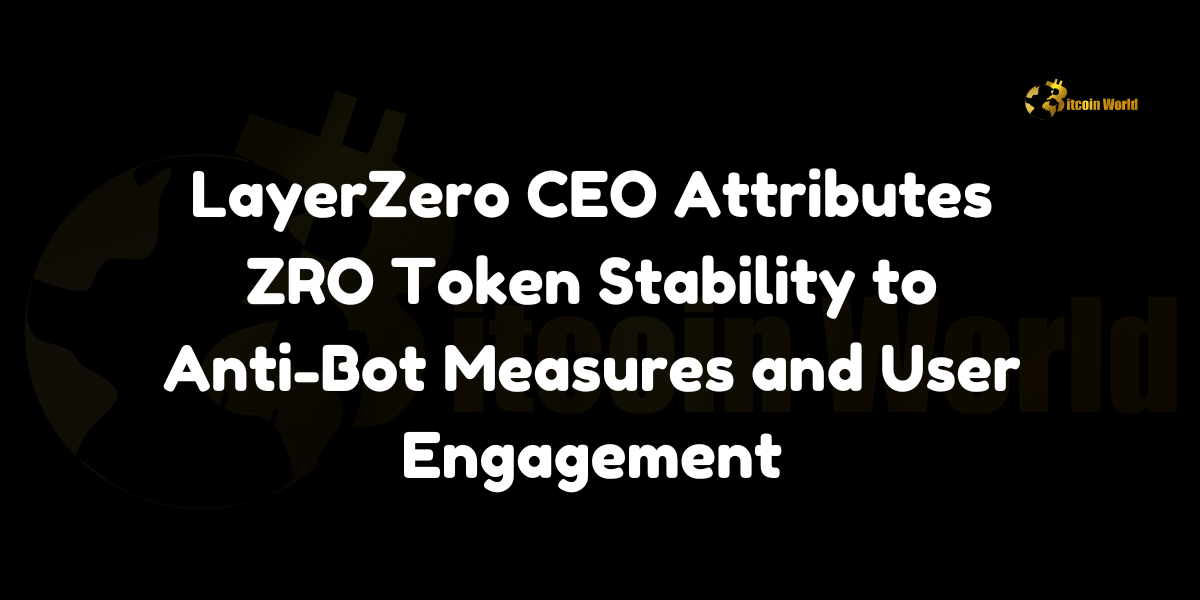LayerZero CEO, LabsBryan Pellegrino, has credited the relative stability of the project’s ZRO token to the implementation of robust anti-bot measures and a focus on rewarding dedicated users. In a recent interview with Cointelegraph, Pellegrino explained that the ZRO token has outperformed comparable tokens from projects like ZKsync and Starknet, which have seen more dramatic price drops since their respective launches. Despite facing some criticism for requiring a donation to claim airdropped tokens, the ZRO token has only declined by 23% since its June 20 launch, significantly better than its peers.
In contrast, Starknet’s STRK token has plummeted over 91%, and ZKsync’s ZK token has dropped by 67%, with both projects facing criticism for insufficient Sybil filtering and declining user activity.
LayerZero’s strategy has centered on preventing bots and Sybil attackers from gaming the airdrop process, ensuring that the rewards go to genuine users who are committed to the project. This approach has helped create a more stable environment for the ZRO token, reducing sell pressure and speculative trading that often follows airdrops. By prioritizing dedicated users, LayerZero has managed to foster a more engaged community, which has contributed to the token’s comparatively modest decline.
The Role of Anti-Bot Measures in Token Performance
Pellegrino emphasized that one of the key factors in ZRO’s stability is the rigorous anti-bot mechanisms the project has implemented. These measures have helped LayerZero filter out opportunistic traders and bots that might otherwise flood the market with airdropped tokens, causing sharp declines in value. This focus on maintaining a genuine user base has paid off, as the ZRO token has performed considerably better than the STRK and ZK tokens, which have been criticized for inadequate Sybil attack prevention.
Criticism of Airdrop Claiming Process
While the anti-bot measures have been praised, LayerZero has faced criticism for requiring users to make a donation in order to claim their airdropped tokens. Some have argued that this requirement creates an unnecessary barrier for users who may not be able or willing to donate. However, Pellegrino defended the decision, stating that the donation requirement was designed to further ensure that only committed users, rather than bots or speculators, would claim the tokens.
Comparison with Starknet and ZKsync Tokens
The performance gap between LayerZero’s ZRO token and those of Starknet and ZKsync underscores the importance of effective anti-bot measures and user engagement strategies. Starknet’s STRK token has experienced a massive 91% decline, largely attributed to falling user activity and poor Sybil filtering. Similarly, ZKsync’s ZK token has dropped by 67%, facing similar issues with bot activity and declining community engagement.
These stark differences highlight the impact of having a robust system in place to ensure that airdropped tokens reach genuine users who are invested in the project’s long-term success.
Conclusion
LayerZero’s ZRO token has demonstrated resilience in a volatile market, thanks to effective anti-bot measures and a commitment to rewarding dedicated users. While the project faced criticism for its airdrop claiming process, these efforts have helped ZRO outperform similar tokens like STRK and ZK, which have seen much steeper declines. As the LayerZero project continues to develop, its focus on user engagement and token stability will be critical to its long-term success.
Internal Links for Reference
To learn more about the innovative startups shaping the future of the crypto industry, explore our article on latest news, where we delve into the most promising ventures and their potential to disrupt traditional industries
Disclaimer: The information provided is not trading advice, Bitcoinworld.co.in holds no liability for any investments made based on the information provided on this page. We strongly recommend independent research and/or consultation with a qualified professional before making any investment decisions.



